Russian River is one of my favorite fishing holes. Of the ones you can drive to, my favorite. Sure it’s crowded during the red-salmon run, but that’s part of the fun.
After the red run winds up, and most anglers put away their equipment or go elsewhere, the Russian becomes a super rainbow and Dolly stream, and one of the prettiest. When most fishermen think of the Russian, they think of crowds, but not in September, October, and even until snow and cold make it too unpleasant to fish.
When the reds are in, we mainly fish the Russian from eight or nine o’clock in the evening until the first ferry brings new anglers the following morning. We fish the Russian, but not really—we fish the Kenai just below where the Russian joins the bigger river.
That’s what we were doing the night Blake took his first fish. We arrived late in the evening and took the last ferry across the Kenai. A few hardy anglers stayed on the Russian side when the ferry departed for its final trip of the day, and we joined them in search of salmon.
We discovered from talking to those who remained, and those who took the ferry back, that fishing had been rather poor throughout the day. Blake and I started to cast, but not with a great deal of enthusiasm. He was perhaps six at the time and soon tired when no fish immediately accepted his offering. We decided to take an early lunch break and give the fish a chance to calm down from the all-day marathon they’d been running trying to get up the Russian past the horde of fishermen, now departed. The diehards, those anglers who’d stayed over, continued to fish, but with no better success than Blake and I had with our lines out of the water and eating Mom’s meatloaf sandwiches and oatmeal cookies.
About the time the lunch ran out, I noticed a group of reds had moved into the hole Blake and I had been fishing earlier. “Get your gear,” I whispered to Blake, “There’s some fish in our hole.”
Blake picked up his rod, and I left mine on the bank. By me standing in the swift current just above Blake, and stopping some of the water pressure, he was able to safely wade out in his short 6-year-old-size boots far enough to cast to the fish. It only took him a couple of tries, and then bam, he had hooked a red. In the half-light of the evening we could see the fish jump and twist and turn trying to throw the hook.
Blake soon had an audience. Almost all those fishing laid down their rods and became Blake’s cheering section. One angler grabbed his net and stepped into the river below Blake. “Bring him in, and I’ll net him for you,” he said.
Blake was able to bring the fish near enough for the kind angler to reach out and net Blake’s catch. When the fish was brought in, the cheering section moved around the net to take a look. It was then discovered that the fish had been hooked behind the head.
“Foul-hooked,” someone said.
And then another piped in, looking at the six-year-old now holding the net, “It’s alright, kid, you’re little. Keep the fish. We don’t care, and nobody’s going to say anything.” One man took the hook out for Blake and left the fish in the net.
Blake looked at me with questioning eyes. “What do I do?” he asked.
“It’s your fish,” I said.
“Isn’t it against the law?” Blake asked.
“Yes, it is.”
“It’s alright,” the crowd chipped in. “Don’t worry. Go ahead and keep your fish.”
Blake looked at me and then at the crowd. Then, he took the net, turned it upside down, and let the fish go back in the water.
The now quiet crowd returned to their fishing. A new run of reds came in and most folks caught at least one fish. Any that was foul-hooked, was released.




 This is Publication Consultants’ motivation for constantly striving to assist authors sell and market their books. Author Campaign Method (ACM) of sales and marketing is Publication Consultants’ plan to accomplish this so that our authors’ books have a reasonable opportunity for success. We know the difference between motion and direction. ACM is direction! ACM is the process for authorpreneurs who are serious about bringing their books to market. ACM is a boon for them.
This is Publication Consultants’ motivation for constantly striving to assist authors sell and market their books. Author Campaign Method (ACM) of sales and marketing is Publication Consultants’ plan to accomplish this so that our authors’ books have a reasonable opportunity for success. We know the difference between motion and direction. ACM is direction! ACM is the process for authorpreneurs who are serious about bringing their books to market. ACM is a boon for them. Release Party
Release Party Web Presence
Web Presence Book Signings
Book Signings Facebook Profile and Facebook Page
Facebook Profile and Facebook Page Active Social Media Participation
Active Social Media Participation Ebook Cards
Ebook Cards The Great Alaska Book Fair: October 8, 2016
The Great Alaska Book Fair: October 8, 2016


 Costco Book Signings
Costco Book Signings eBook Cards
eBook Cards

 Benjamin Franklin Award
Benjamin Franklin Award Jim Misko Book Signing at Barnes and Noble
Jim Misko Book Signing at Barnes and Noble
 Cortex is for serious authors and will probably not be of interest to hobbyists. We recorded our Cortex training and information meeting. If you’re a serious author, and did not attend the meeting, and would like to review the training information, kindly let us know. Authors are required to have a Facebook author page to use Cortex.
Cortex is for serious authors and will probably not be of interest to hobbyists. We recorded our Cortex training and information meeting. If you’re a serious author, and did not attend the meeting, and would like to review the training information, kindly let us know. Authors are required to have a Facebook author page to use Cortex. Correction:
Correction: This is Publication Consultants’ motivation for constantly striving to assist authors sell and market their books. ACM is Publication Consultants’ plan to accomplish this so that our authors’ books have a reasonable opportunity for success. We know the difference between motion and direction. ACM is direction! ACM is the process for authors who are serious about bringing their books to market. ACM is a boon for serious authors, but a burden for hobbyist. We don’t recommend ACM for hobbyists.
This is Publication Consultants’ motivation for constantly striving to assist authors sell and market their books. ACM is Publication Consultants’ plan to accomplish this so that our authors’ books have a reasonable opportunity for success. We know the difference between motion and direction. ACM is direction! ACM is the process for authors who are serious about bringing their books to market. ACM is a boon for serious authors, but a burden for hobbyist. We don’t recommend ACM for hobbyists.

 We’re the only publisher we know of that provides authors with book signing opportunities. Book signing are appropriate for hobbyist and essential for serious authors. To schedule a book signing kindly go to our website, <
We’re the only publisher we know of that provides authors with book signing opportunities. Book signing are appropriate for hobbyist and essential for serious authors. To schedule a book signing kindly go to our website, < We hear authors complain about all the personal stuff on Facebook. Most of these complaints are because the author doesn’t understand the difference difference between a Facebook profile and a Facebook page. Simply put, a profile is for personal things for friends and family; a page is for business. If your book is just a hobby, then it’s fine to have only a Facebook profile and make your posts for friends and family; however, if you’re serious about your writing, and it’s a business with you, or you want it to be business, then you need a Facebook page as an author. It’s simple to tell if it’s a page or a profile. A profile shows how many friends and a page shows how many likes. Here’s a link <> to a straight forward description on how to set up your author Facebook page.
We hear authors complain about all the personal stuff on Facebook. Most of these complaints are because the author doesn’t understand the difference difference between a Facebook profile and a Facebook page. Simply put, a profile is for personal things for friends and family; a page is for business. If your book is just a hobby, then it’s fine to have only a Facebook profile and make your posts for friends and family; however, if you’re serious about your writing, and it’s a business with you, or you want it to be business, then you need a Facebook page as an author. It’s simple to tell if it’s a page or a profile. A profile shows how many friends and a page shows how many likes. Here’s a link <> to a straight forward description on how to set up your author Facebook page.



 Mosquito Books has a new location in the Anchorage international airport and is available for signings with 21 days notice. Jim Misko had a signing there yesterday. His signing report included these words, “Had the best day ever at the airport . . ..”
Mosquito Books has a new location in the Anchorage international airport and is available for signings with 21 days notice. Jim Misko had a signing there yesterday. His signing report included these words, “Had the best day ever at the airport . . ..”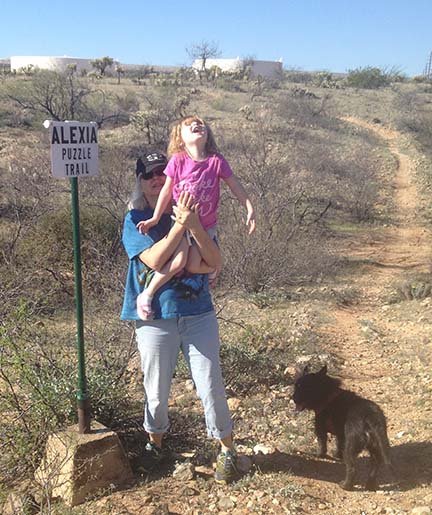


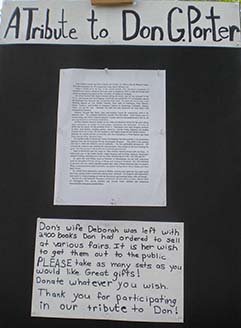
 The Lyin Kings: The Wannabe World Leaders
The Lyin Kings: The Wannabe World Leaders
 Time and Tide
Time and Tide


 ReadAlaska 2014
ReadAlaska 2014 Readerlink and Book Signings
Readerlink and Book Signings
 2014 Independent Publisher Book Awards Results
2014 Independent Publisher Book Awards Results

 Bonnye Matthews Radio Interview
Bonnye Matthews Radio Interview
 Rick Mystrom Radio Interview
Rick Mystrom Radio Interview When he published those overseas blogs as the book The Innocents Abroad, it would become a hit. But you couldn’t find it in bookstores.
When he published those overseas blogs as the book The Innocents Abroad, it would become a hit. But you couldn’t find it in bookstores. More NetGalley
More NetGalley Mary Ann Poll
Mary Ann Poll
 Bumppo
Bumppo
 Computer Spell Checkers
Computer Spell Checkers Seven Things I Learned From a Foreign Email
Seven Things I Learned From a Foreign Email 2014 Spirit of Youth Awards
2014 Spirit of Youth Awards Book Signings
Book Signings

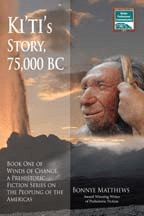
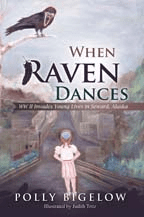 Blog Talk Radio
Blog Talk Radio Publication Consultants Blog
Publication Consultants Blog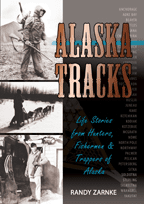 Book Signings
Book Signings



 Don and Lanna Langdok
Don and Lanna Langdok Ron Walden
Ron Walden Book Signings Are Fun
Book Signings Are Fun Release Party Video
Release Party Video
 Erin’s book,
Erin’s book,  Heather’s book,
Heather’s book,  New Books
New Books